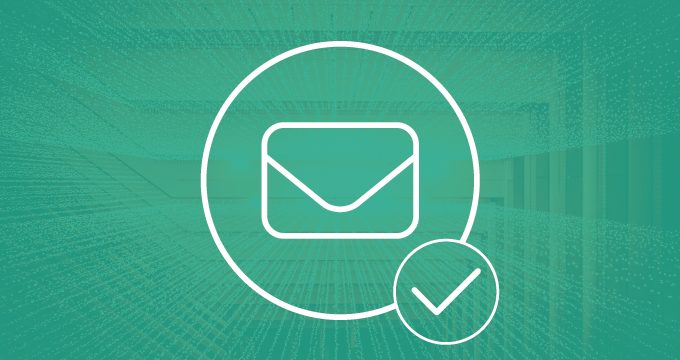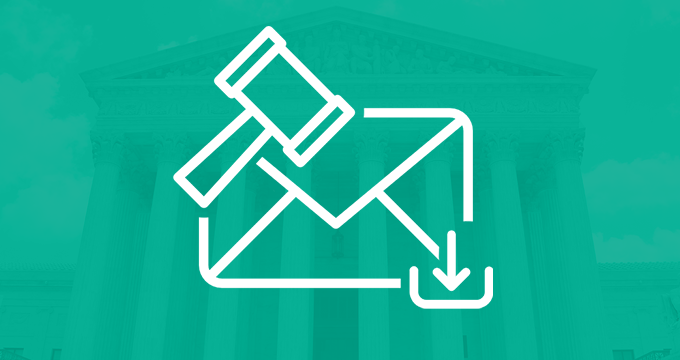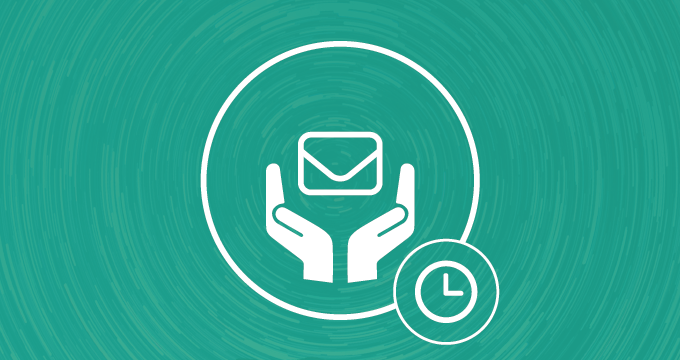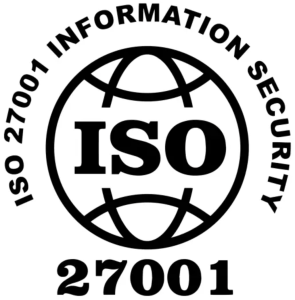With email archiving being the cornerstone of a business’s ability to comply with data retention laws, you can ask yourself, is archiving enough?
The answer depends on the solution you’re using, as there can be problems if the emails get compromised.
It’s almost as if you never even archived them.
To prevent these sorts of compromises, email message integrity needs to be on top of your mind when looking for an email archiving solution.
Here’s what we’ll cover:
- What is email message integrity
- What is an email integrity check
- Why it’s important
- Which archiving solution is equipped with it
Let’s get started.
What Is Email Message Integrity?
Email integrity means that a message has not been tampered with, altered, or deleted in any way over the period it was stored in an archive. It is used as proof that the message details we present are the same as the message that was captured by our archiving system.
It guarantees that the message wasn’t tampered with or manipulated in any way during its time in the email archive.
Another name for it is email integrity check, or an organization’s ability to prove that a particular email record hasn’t been compromised.
Email message integrity is important for two main reasons.
1. Metadata tells a story
The main reason we archive email is its text and attachments, but this isn’t enough in the eyes of the law.
There’s much information in the email’s header, the date it was sent or received, and the sender’s/recipient’s address.
Collectively, this is called email metadata.
This information is vital in ediscovery cases where every email is thoroughly inspected as well as its metadata because it holds much evidence like:
- Which route did the message take?
- What is the sender’s IP address?
- Which group of people saw the email?
- What was the timeline of the conversation?
- Where might the suspects be located?
- Were emails tried to be covered up?
And much more information vital for any court.
2. Your archive needs to be tamper-proof
Under the SEC Rule 17a-4 and many other data retention and compliance laws, electronic records must be preserved in a non-rewritable and non-erasable format.
This means that your email archiving solution of choice must be designed to retain email messages and their content without any possibility of alteration or deletion.
While an adequate tamper-proof archiving solution is the first part of securing your email, you will need to establish the right process for your organization.
User roles and permissions must be created to give minimal privileges to end users while compliance officers, lawyers, administrators, and executives can have higher access.
This allows them to change certain options like retention periods, and inspect people’s messages, but makes sure nobody can abuse their power to make alterations.
To further strengthen your email message integrity, your archiving solution needs to record data in the WORM (write once read many) format and employ certain security measures like:
- Encryption,
- User roles configuration,
- Email message integrity verification.
If by any chance your archive experiences unusual activity, features like the audit trail allow you to track down and pinpoint the source of the issue.
The audit log should be generated automatically and record every creation, modification, view, and deletion while aligning it with the user who performed the action.
Every event needs to be time-stamped so that the administrators or compliance officers can have complete oversight of the who, what, and when of every action.
How Does an Email Integrity Check Work?
The email integrity checking or verification process begins right when the email gets sent or received.
It gets broken down and processed, and its data hash gets calculated before getting saved in the index and archived in the filesystem. Through this process, all of its content including the metadata is saved for later verification.
Now, when we perform an email message integrity check, the digested data gets computed once again and compared to the values of the email messages we verify.
If both the message and hashed data match, the email integrity is intact.
If not, the archived file is likely corrupted or altered in some way and we can start the audit trail process to find out what happened.
The integrity check serves as proof that what compliance officers or lawyers are reviewing is the original message with its original content and metadata.
The Best Solution to Archive Your Email Messages with Integrity in Mind
As we mentioned, just archiving email doesn’t mean much in terms of compliance if you can’t prove its integrity.
This means that the most crucial part of your integrity check is the email archiving solution you choose and how it processes your data.
An email archiving solution like Jatheon solves all of your email integrity worries without any need for additional user input. Let’s take a look at how it works.
Jatheon boasts robust archiving capabilities for email, social media, and text messages, archiving all incoming and outgoing communications automatically.
Once a piece of information is captured, it’s broken down and indexed, keeping all of its original data in the index for later comparison and verification.
Besides the usual data like the content of an email, Jatheon captures all the necessary metadata like the sender, recipient, subject line, dates sent and received, and any further messages in the email thread.
Once everything is safely archived, Jatheon has its verification process which compares the content of the email with the original content stored in its index, allowing you to easily perform an email message check and prove their integrity.
Conclusion
Archiving email communication is crucial for any organization looking to comply with email retention laws, but it’s not a be-all and end-all solution to stay compliant.
Once you’re asked to present evidence of communication, you also need to verify that your data wasn’t manipulated in any way for it to be valid in court.
That’s why an email integrity check is the second piece to the compliance puzzle, proving you’re trustworthy and that you take good care of your data.
A proper archiving solution is the best way to keep your organization compliant without worries that you won’t be able to prove your data’s integrity.
Solve all of your email archiving needs with Jatheon’s cloud email archiving solution built for businesses of all sizes. Stay compliant, speed up your ediscovery, and retain all of your business data in one easy-to-use solution.
Read Next:The Importance of Email Archiving – 18 Reasons to Archive Email |











